39 reading sodium on food labels
How To Read Nutrition Labels - Mayo Clinic Diet 3. Check the % Daily Value. The % Daily Value (DV) tells you how much a nutrient in a serving of food contributes to a daily diet. 2,000 calories a day is used for general nutrition advice. Low is 5% or less. Aim for low in saturated fat, trans fat, cholesterol, sodium, and added sugars. High is 20% or more. Aim high in vitamins, minerals and ... Sodium on the Nutrition Facts Label | FDA - U.S. Food and Drug ... The Nutrition Facts Label is a handy tool you can use every day to see the amount of sodium in packaged foods and beverages and make informed dietary choices. FDA's education materials show you how!
Don't be salty: Reading food labels can help you lower your sodium ... The researchers estimated sodium intake with 24-hour food recalls. They also asked people about how frequently they ate salty snacks/meals and their frequency of using food labels. The study revealed that people who routinely read food labels ate an average of 93 mg less sodium per day and were less likely to eat salty snacks compared to folks ...
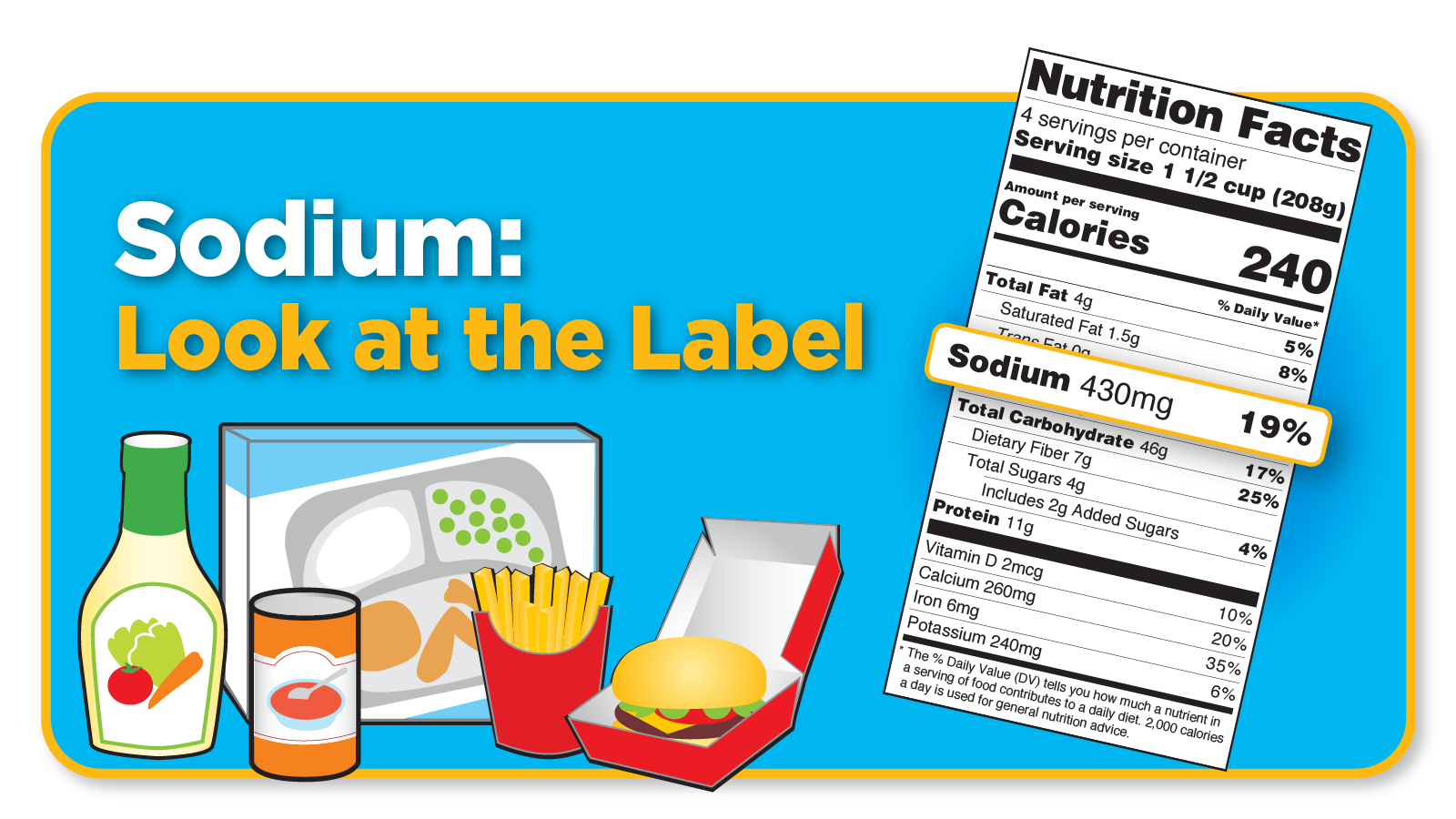
Reading sodium on food labels
Understanding Food Nutrition Labels | American Heart Association Remember that the information shown in the label is based on a diet of 2,000 calories a day. You may need less or more than 2,000 calories depending upon your age, gender, activity level, and whether you're trying to lose, gain or maintain your weight. When the Nutrition Facts label says a food contains "0 g" of trans fat, but includes ... Sodium and Food Labels | Sutter Health 2 medium stalks celery: 64 mg sodium. 2 green onions: 4 mg sodium. 1 tablespoon low-sodium sweet pickle relish: 50 mg sodium. Total = 783 mg sodium. Per serving (2): 392 mg sodium. Add to your meal: 2 slices no-salt-added wheat bread: 20 mg sodium. 1 cup grapes: 3 mg sodium. 1 cup low-fat milk: 125 mg sodium. PDF Reading Food Labels to Look for Sodium - ksw-gtg.com Reduced or less sodium At least 25 percent less sodium than the regular product Light in sodium 50 percent less sodium than the regular product Reading Food Labels to Look for Sodium *The American Heart Association recommends that all Americans should reduce the amount of sodium in their diet to less than 1500 mg a day. Ask your healthcare ...
Reading sodium on food labels. PDF Read the Nutrition Facts Label for Sodium! - National Institutes of Health Sodium 125mg 5% Total Carbohydrate 9g 3% Dietary Fiber 3g 12% Sugars 4g Protein 2g Vitamin A 35% • Vitamin C 6% Calcium 2% • Iron 2% Read the Nutrition Facts Label for Sodium! Nutrition Facts labels tell you what you need to know about choosing foods that are lower in sodium. Here is a Nutrition Facts label for frozen peas and carrots ... What Sodium Labels Mean: A Guide to Decoding ... - The Kitchn Sodium-Free: These products have less than 5 milligrams of sodium per serving and contain no sodium chloride. Very Low Sodium: These products contain 35mg sodium or less per serving. Low Sodium: These products contain 140mg sodium or less per serving. Reduced (or Less) Sodium: This label means that the sodium level in the product has been ... Controlling Sodium and Reading Labels 2) Check sodium content. Use food labels and packaging to help you select the lowest sodium option. If unable to buy low sodium versions, drain and rinse canned foods under running water to remove excess sodium. • Choose foods with 140 mg sodium or less per serving. • Avoid food with more than 300 mg of sodium per serving. Understanding food labels - Canada.ca Find information on food labels and how to understand them. Learn about nutrition facts tables, serving size, list of ingredients, % daily value and nutrition claims.
How to Read a Food Label to Limit Sodium: Care Instructions The label lists the ingredients in a food in descending order (from the most to the least). If salt or sodium is high on the list, there may be a lot of sodium in the food. Know that sodium has different names. Sodium is also called monosodium glutamate (MSG), sodium citrate, sodium alginate, and sodium phosphate. Read Nutrition Facts labels ... Sodium: How to Read Food Labels - Intermountain Healthcare NUTRITION INFORMATION FROM YOUR DIETITIAN ... Reading food labels can help you monitor how much sodium you are getting in your diet. Here are some of. How to Read Sodium Percentages on Food Packages The 2010 Dietary Guidelines recommends that adults consume less than 2,300 milligrams of sodium per day. However, people with certain risk factors or health conditions should consume less than 1,500 milligrams of sodium per day. This recommendation includes middle-age adults, older adults, African-Americans and individuals with high blood ... Changes to the Nutrition Facts Label | FDA - U.S. Food and ... Mar 07, 2022 · Manufacturers with $10 million or more in annual sales were required to update their labels by January 1, 2020; manufacturers with less than $10 million in annual food sales were required to ...
Understanding Ingredients on Food Labels | American Heart ... Mar 06, 2017 · Food labels are an important source of information about calories and the nutritional value of the foods you eat, a crucial tool in building a heart-healthy diet. The Nutrition Facts information is always displayed in the same orderly fashion and helps you understand how much of certain nutrients that you need to limit are contained in the ... ebook - Wikipedia Reading data. All of the e-readers and reading apps are capable of tracking e-book reading data, and the data could contain which e-books users open, how long the users spend reading each e-book and how much of each e-book is finished. In December 2014, Kobo released e-book reading data collected from over 21 million of its users worldwide. Sodium: How to Read Food Labels - Intermountain Healthcare Sodium: How to Read Food Labels. Reading food labels can help you monitor how much . sodium. you are getting in your diet. Here are some of the key parts to check: Notice the . serving size. Is that the same portion as you are eating? If your serving size increases, then the amount of sodium you eat also increases. This product has . 2 servings ... Pet Food Labels - General | FDA For example, a canned food guarantees 8% crude protein and 75% moisture (or 25% dry matter), while a dry food contains 27% crude protein and 10% moisture (or 90% dry matter). Which has more ...
Reading food labels: Tips if you have diabetes - Mayo Clinic Put sugar-free products in their place. Sugar-free doesn't mean carbohydrate-free. Sugar-free foods may play a role in your diabetes diet, but remember that it's equally important to consider carbohydrates as well. A sugar-free label means that one serving has less than 0.5 grams of sugar. When you're choosing between standard products and ...
Sodium & Your Heart Health: How To Read Nutrition Facts On Food Labels Food can be considered low-sodium if the total sodium content is 140mg or less and is based on serving size. Overindulging on the portions with a low-sodium food can potentially be just as detrimental as eating a food that's high in salt. Additionally, people shopping for low-sodium foods should opt for packaging that features a 5% DV or lower.
Understanding Food Labels | The Nutrition Source | Harvard T ... Chile implemented the Law of Food Labeling and Advertising in 2016, comprised of mandatory front-of-package (FOP) warning labels, restrictions on child-directed marketing, and the banning of sales in schools of all foods and beverages containing added sugars, sodium, or saturated fats that exceeded set nutrient or calorie thresholds. [1]
How To Read A Food Label - KidsAcookin By reading food labels, you can make sure that you are buying healthy foods that will help you maintain a balanced diet. Here are some tips for reading food labels: 1. ... then one serving of the food provides 4% of the recommended daily intake of sodium. Nutrition and food science lessons can be taught in grades 11 and up. Comprehension ...
Reading Food Labels | ADA - American Diabetes Association The Nutrition Facts labels on foods are really the key to making the best choices. We'll cover the basics so that these labels make shopping easier for you. You've heard it all. From carb-free to low-carb, to whole and empty carbs, it's hard to know what it all means. Blood sugar highs and lows aren't always easy to understand.
Food label reading guide | Nutrition Australia Most food or drink packages have a Nutrition Information Panel (NIP) which tells you the quantity of various nutrients a product contains per serve and per 100g or 100 ml. The NIP will also provide information on the serve size and the number of servings per packet. When reading the NIP: • always read the per 100g column to compare similar ...
How to Understand and Use the Nutrition Facts Label | FDA - U.S. Food ... It's important to realize that all the nutrient amounts shown on the label, including the number of calories, refer to the size of the serving. Pay attention to the serving size, especially how ...
How to Decode Salt on Food Labels: Low Sodium vs Reduced Sodium vs ... These foods have at least 25% less sodium than their original version. "Light in sodium" or "lightly salted" items are reduced by 50%. Unlike low sodium foods, reduced sodium foods can still be swimming in sodium. (One reduced-sodium soup we saw packs 660 mg per serving!) Keep an eye out for reduced sodium soups, reduced sodium chicken ...
PDF Reading Food Labels to Look for Sodium - ksw-gtg.com Reduced or less sodium At least 25 percent less sodium than the regular product Light in sodium 50 percent less sodium than the regular product Reading Food Labels to Look for Sodium *The American Heart Association recommends that all Americans should reduce the amount of sodium in their diet to less than 1500 mg a day. Ask your healthcare ...
Sodium and Food Labels | Sutter Health 2 medium stalks celery: 64 mg sodium. 2 green onions: 4 mg sodium. 1 tablespoon low-sodium sweet pickle relish: 50 mg sodium. Total = 783 mg sodium. Per serving (2): 392 mg sodium. Add to your meal: 2 slices no-salt-added wheat bread: 20 mg sodium. 1 cup grapes: 3 mg sodium. 1 cup low-fat milk: 125 mg sodium.
Understanding Food Nutrition Labels | American Heart Association Remember that the information shown in the label is based on a diet of 2,000 calories a day. You may need less or more than 2,000 calories depending upon your age, gender, activity level, and whether you're trying to lose, gain or maintain your weight. When the Nutrition Facts label says a food contains "0 g" of trans fat, but includes ...





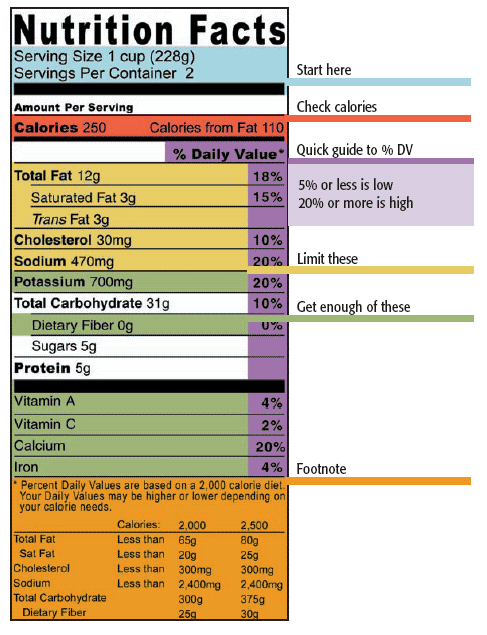



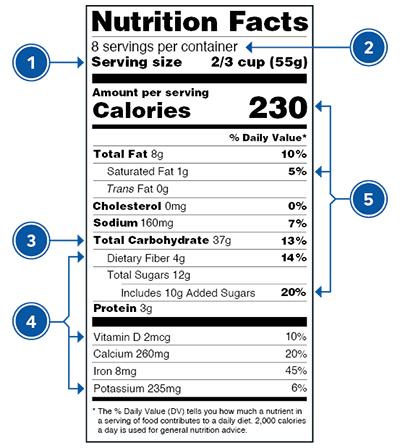



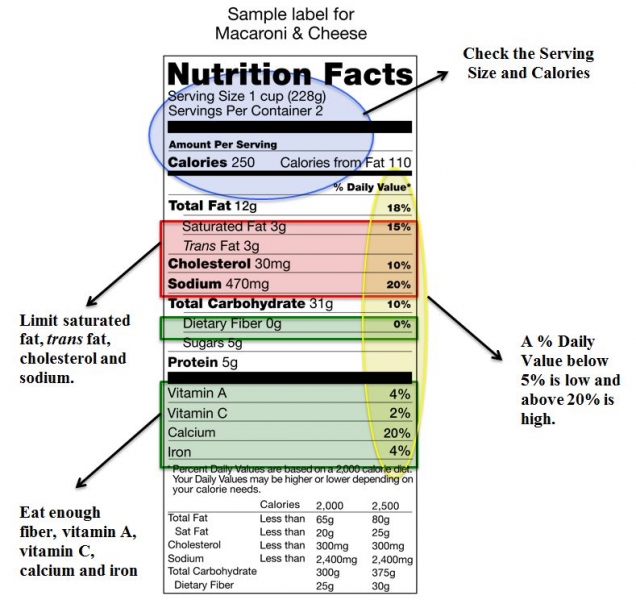
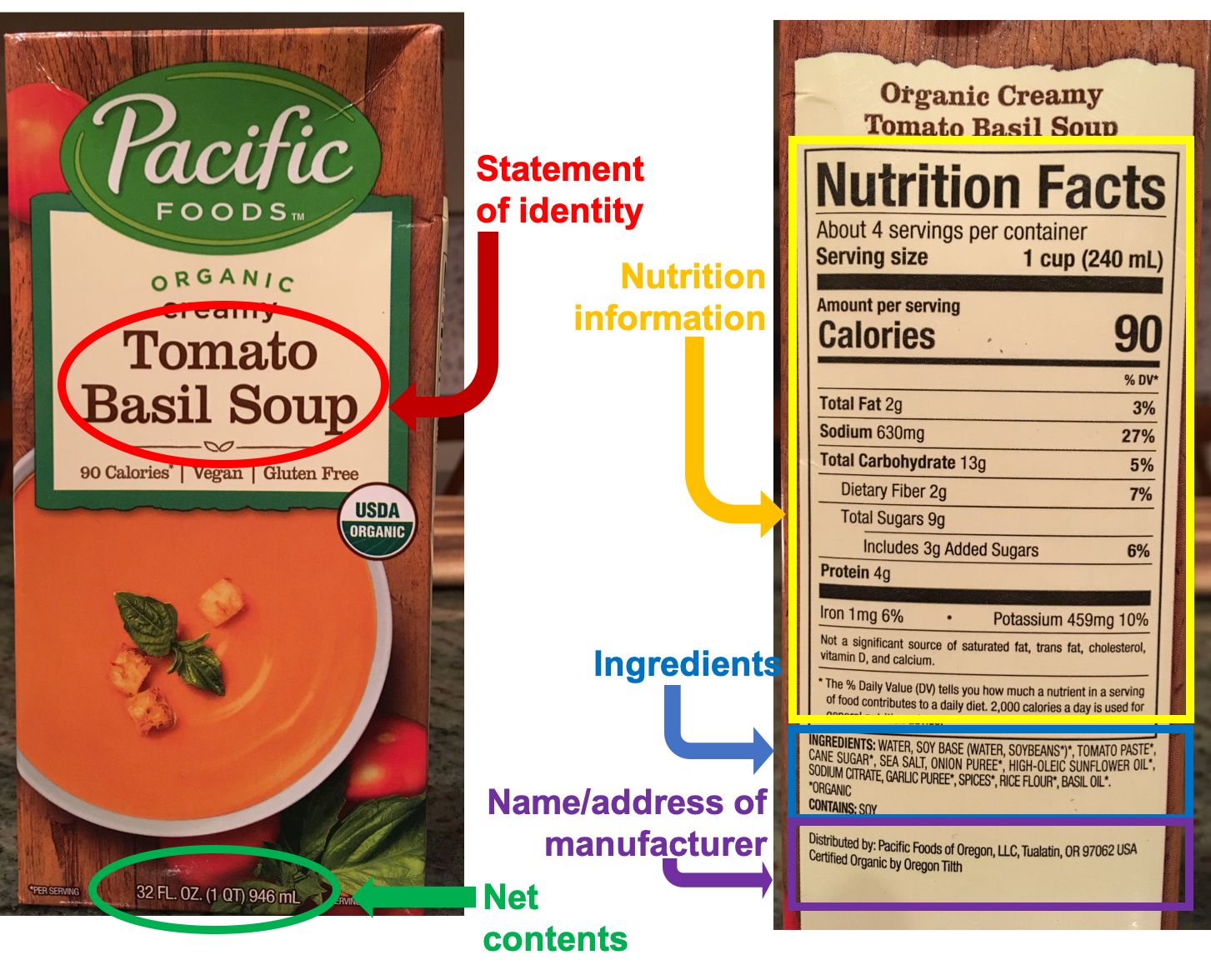





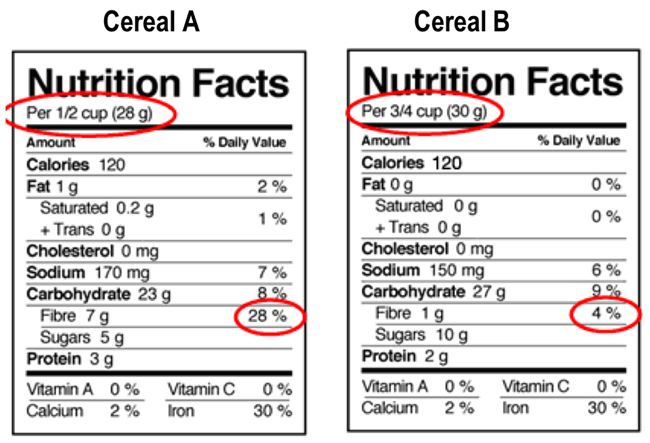





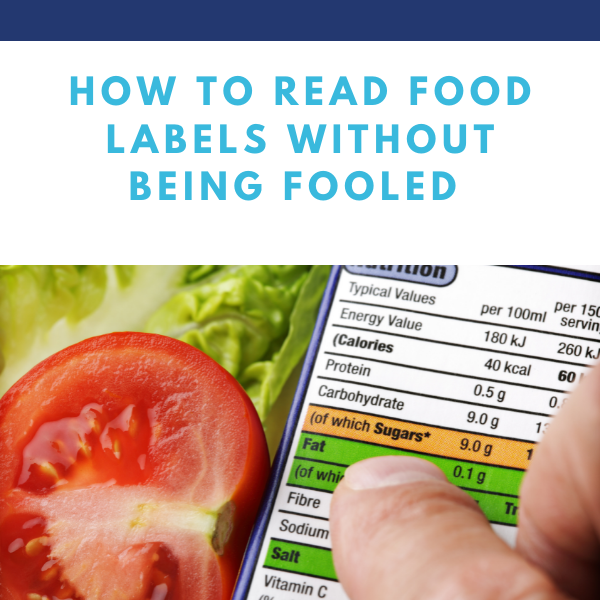





Post a Comment for "39 reading sodium on food labels"